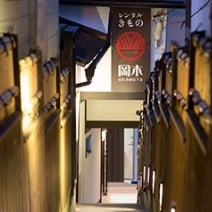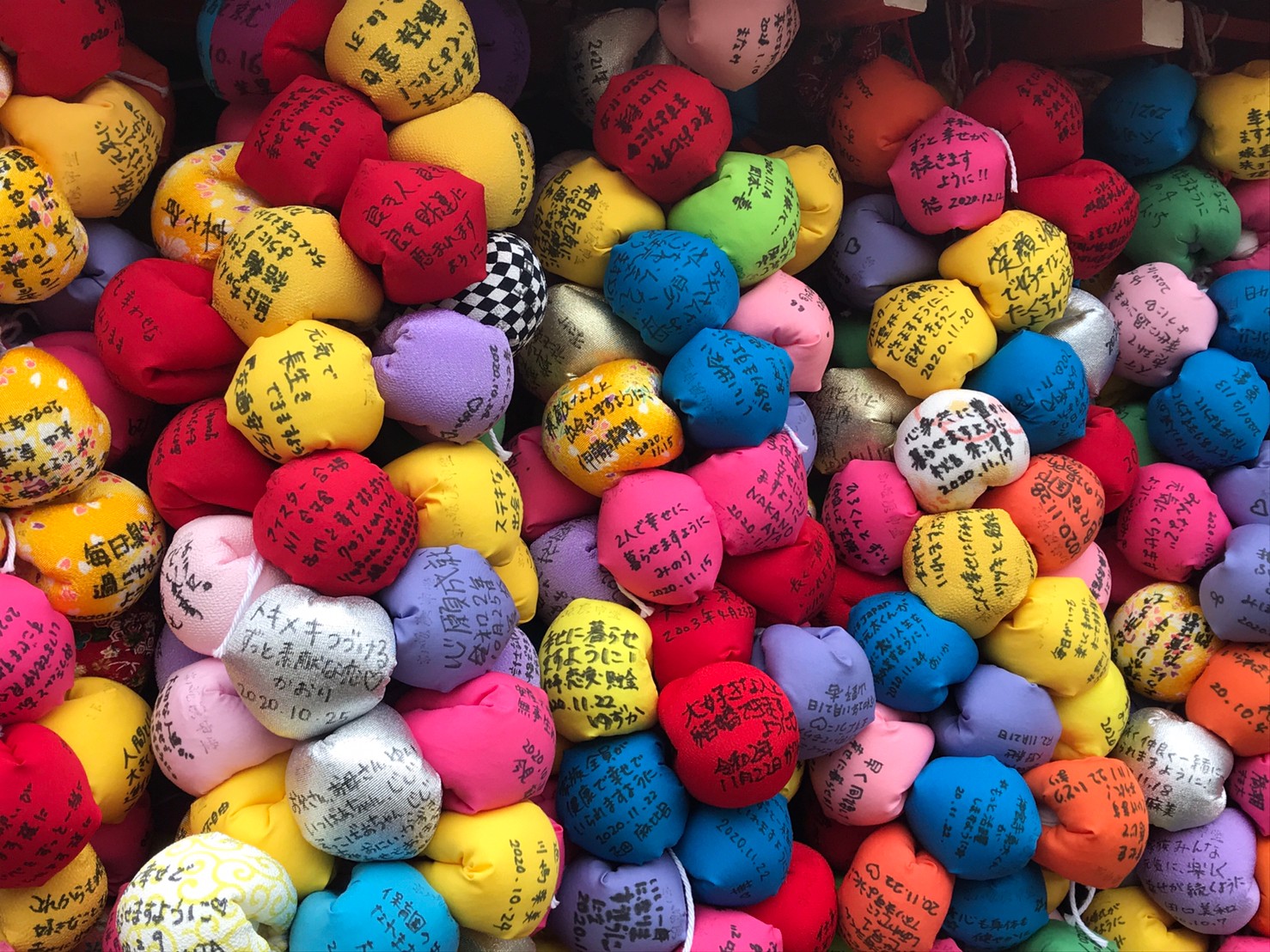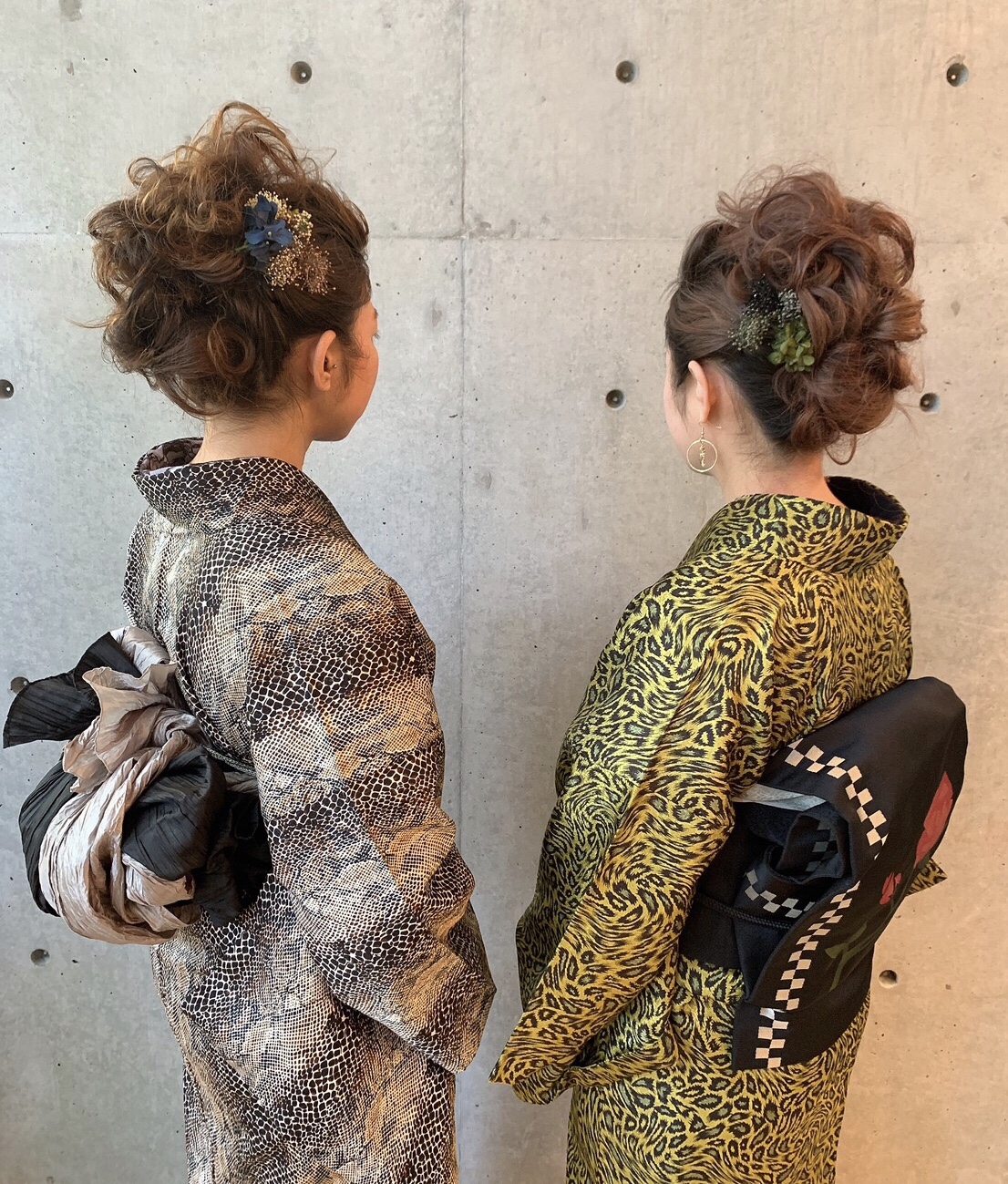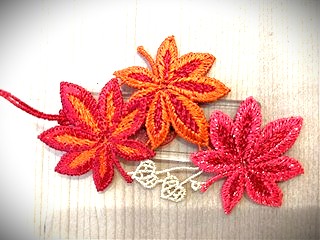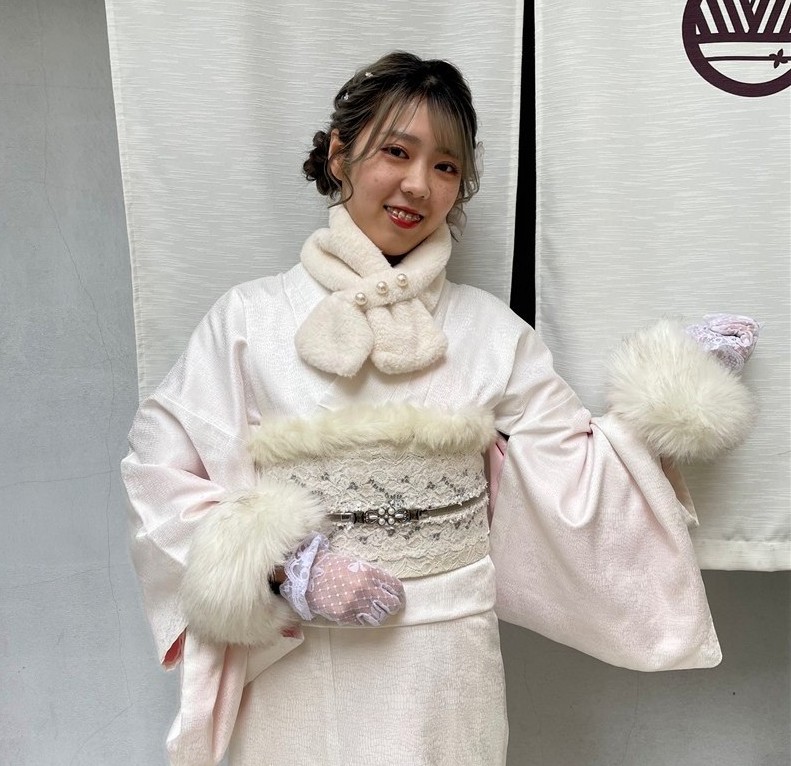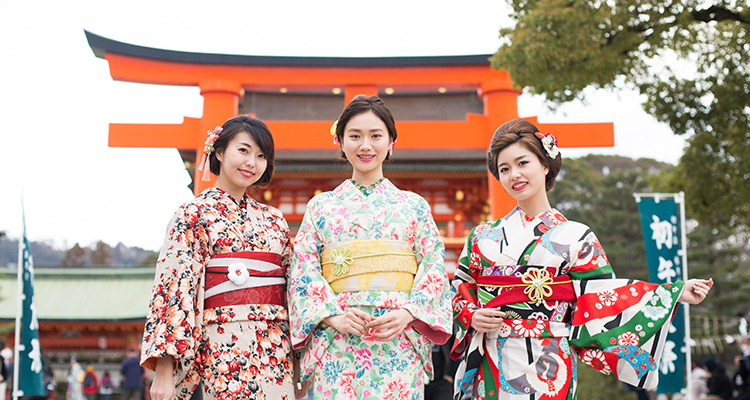
special fearure・column
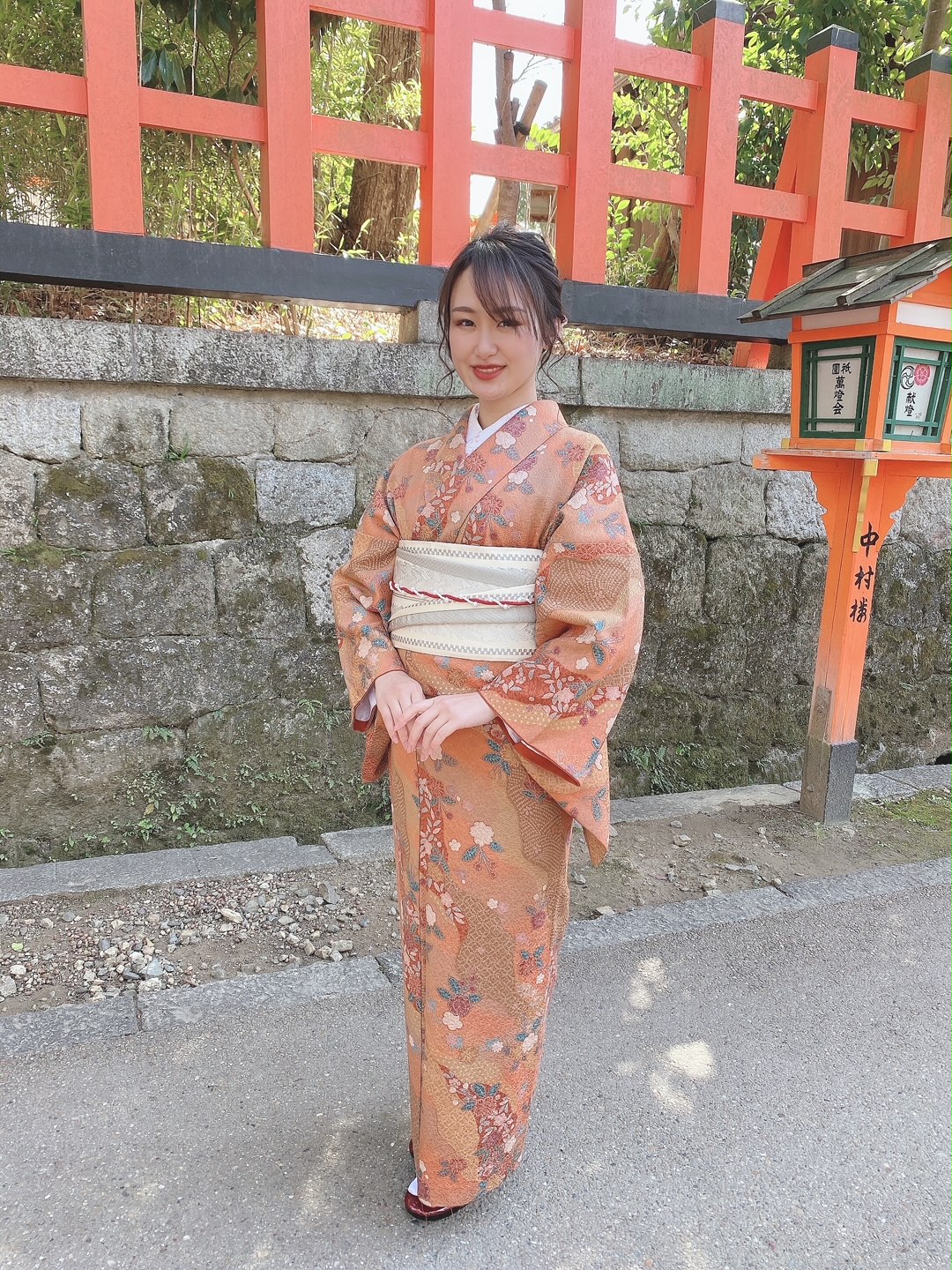
Kimono Q&A Special: Everything You Need to Know When Wearing a Kimono
Kimono Q&A Special: Everything You Need to Know When Wearing a Kimono
In recent years, renting a kimono in Kyoto has become commonplace. More and more people are now enjoying wearing kimono as part of their travels, sightseeing, school trips, and excursions. As someone who works in the kimono industry, I couldn’t be happier.
Looking back over a decade ago, when I was a student, the idea of going out in kimono with friends didn’t even cross our minds—and there were hardly any shops offering that option. Many of us only experienced wearing a formal kimono for the first time at our coming-of-age ceremony, where we were suddenly told things like “You have to walk this way!” “Don’t do this!” “Don’t do that!” “Be careful not to get makeup on the collar!”—it was all a blur.
Compared to those days, kimono has certainly become a much more accessible part of life.
That said, there are still very few chances to be properly taught how to move and behave in a kimono. We often receive questions from customers such as:
“What should I do when I need to ○○?”
“○○ is hard to do in a kimono—how can I manage?”
These questions show just how eager people are to enjoy their kimono experience while keeping it beautiful all day long.
So today, we’re answering some of the most frequently asked questions about wearing kimono, along with tips for proper movement and things to be mindful of!
Most Asked Question
Q1 How do I go to the restroom in a kimono? Is it even possible?!
A. Absolutely possible!
Lift the bottom of your kimono, then the under-kimono (nagajuban), and finally the inner garment (hadajuban), one layer at a time. Hold all three layers together with both hands and lift them up to your waist. It’s easiest if you tuck them into your obi (belt), but if that’s difficult, just be careful they don’t fall down.
To avoid bunching around your legs, don’t just pull everything down at once—straighten each layer gently and return them one by one.
One-point tip:
If you can, opt for a Western-style toilet instead of a Japanese-style squat toilet. If using a squat toilet, be extra cautious not to let your sleeves touch the floor.

Q2 I can’t walk well in zōri sandals. Is there a right way to walk?
A. Yes!
Keep your back straight, slightly turn your toes inward, and take smaller steps than usual. Avoid dragging your feet to protect the soles of your zōri and keep from making noise. Walking with a long stride like you would in pants or a skirt may cause your kimono to loosen.
One-point tip:
Try to carry your bag in your left hand and use your right hand to lightly hold the front of your kimono. This keeps the hem from flapping and makes your walk look graceful and elegant—a small gesture, but one that will be appreciated by seasoned kimono wearers.
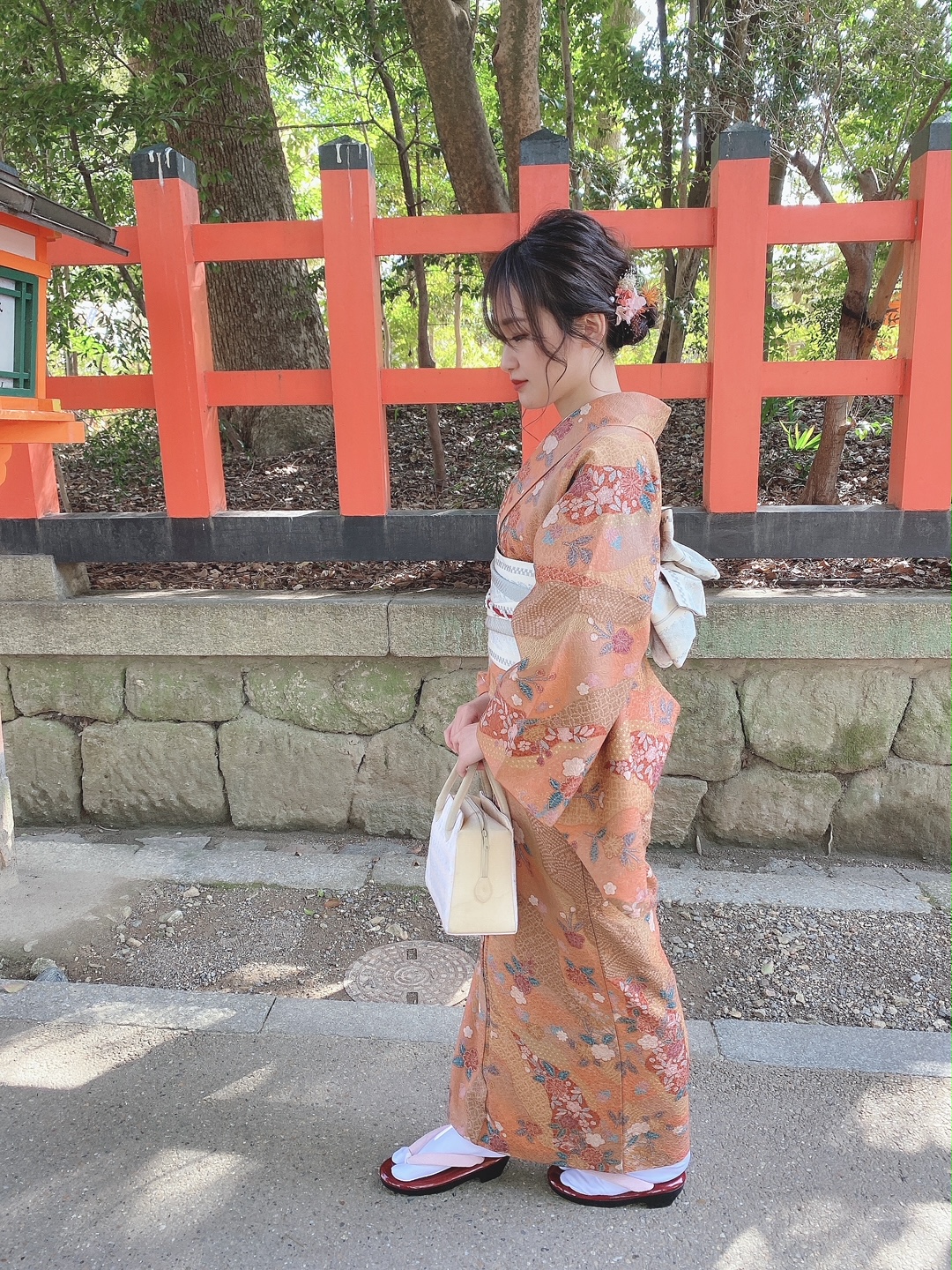
Q3 How should I pose for photos in a kimono?
A. Any pose is fine as long as your sleeves aren’t flared open and your hem stays neat.
One-point tip:
For a more elegant or formal look, place your hands gently one over the other just below your belly button, stand with a slight inward bend at the knees, and shift one foot slightly behind the other. This posture creates a graceful silhouette.

Q. It’s hard to go up and down stairs or steps. Any tips?
A. Don’t walk the same way you would in everyday clothes.
When climbing stairs, gently lift the front of your kimono to avoid stepping on the hem. Do the same when descending—lightly pinch the front so it doesn’t drag or catch. Don’t lift it too much, or your calves might show!
One-point tip:
Angle your body slightly and go one step at a time. It’s easier and looks more elegant.
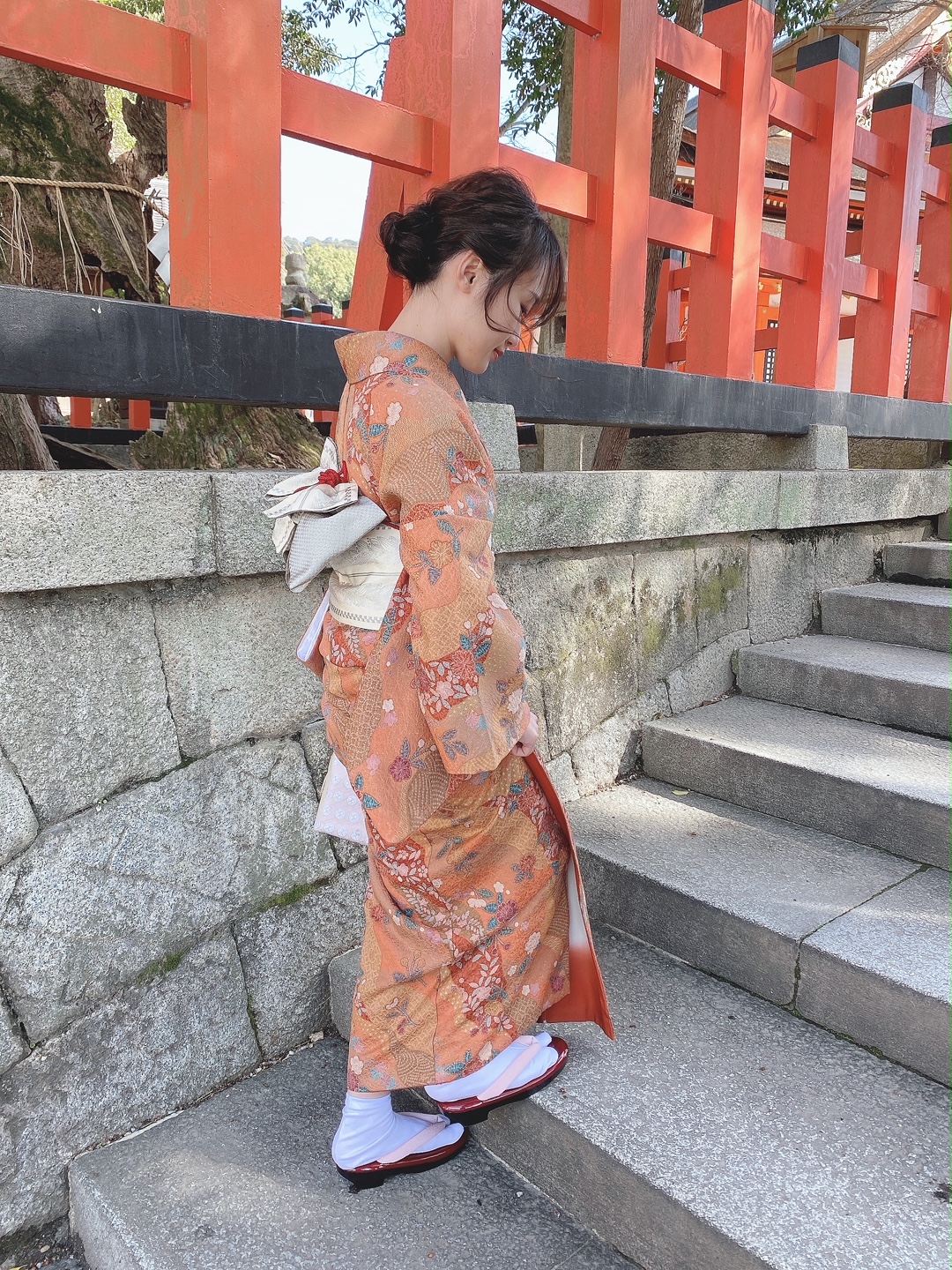
Kimono Malfunction Q&A
Q. The chest or waist area becomes messy. How can I fix it?
A. The simplest way is to stand straight as if your body is aligned from head to toe.
Poor posture like slouching or sticking your stomach out often causes the kimono to loosen.
One-point tip:
If the collar is popping up, insert your left hand through the side opening (called "miyatsuguchi") and gently tug the inner collar diagonally. Use your right hand to adjust the outer layer and smooth the waistline.
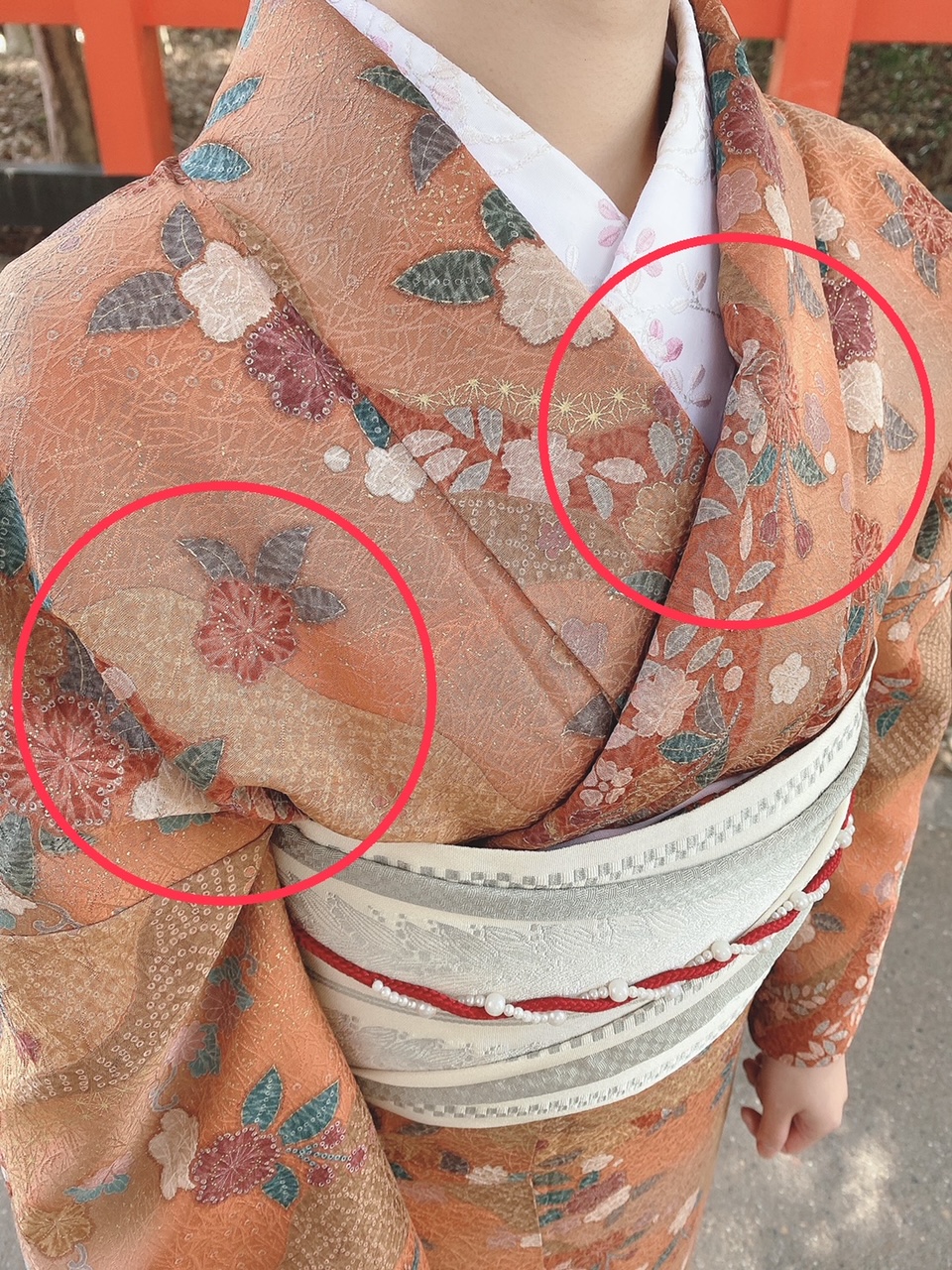
Q. I lifted my arm and the fabric popped out! Now the underarm is loose—can I fix this?
A. As a temporary fix, tuck the loose fabric into your waist cord on the opposite side.
Kimono are not designed for raising your arms above your head. Doing so can cause the sides or chest to shift out of place. It’s not forbidden, but it’s best to avoid raising your arms too high.
One-point tip:
When reaching for something, use your opposite hand to gently hold your sleeve in place. This prevents the sleeve from touching your food or belongings and gives off an air of refined elegance.

With just a few mindful actions, you can keep your kimono looking beautiful all day—and leave people thinking, “Wow, what a graceful kimono beauty!”
Of course, that doesn’t mean you must follow every single rule to wear a kimono. What matters most is that you enjoy your time in kimono and grow to love wearing it.
Traditional rules and etiquette have their place, but times have changed, and so should kimono styling.
For example, in the past, it was said that one shouldn’t wear accessories with kimono. The real reason was to avoid damaging expensive silk. But now? Wearing earrings or piercings can look cute in photos and really boost your mood. We want you to feel your absolute best in kimono!
At Rental Kimono Okamoto, our standard plans use “hanhaba obi” (half-width obi), which can be tied in adorable ribbon-like styles.
From washable polyester kimono to vintage-style silk ones, we have a wide variety to suit every taste. For a more elegant and mature look, we also offer Nagoya obi. Just changing the obi can transform your entire look!
If you want to express your individuality through fashion, our DECOCO Plan is perfect for you. Add lace, brooches, and fun accessories to create a stylish, trendy, and even retro-modern kimono style.
We hope you’ll visit Rental Kimono Okamoto and find the perfect coordination from our wide selection of kimono, obi, and accessories.
Let us help you make beautiful, lasting memories.
— From All the Staff at Rental Kimono Okamoto
Website: www.okamoto-kimono.com
Instagram: @rentalkimonookamoto
TikTok: @rentalkimono_okamoto
Facebook: Rental Kimono Okamoto
X (formerly Twitter): @okamotokimono
Lit.link: lit.link/rentalkimonookamoto
Arashiyama Shop
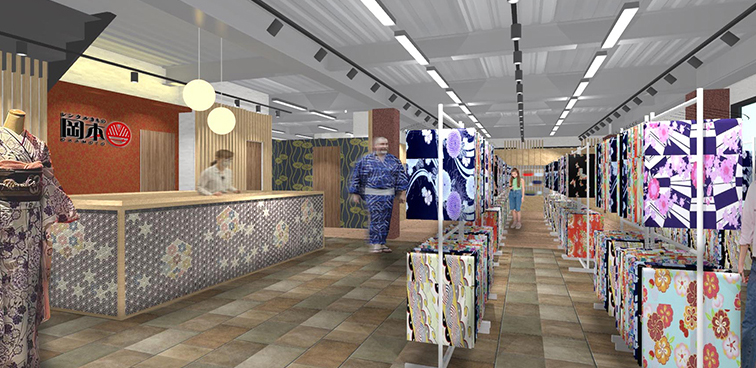
48-4 Saga Tenryuji Kitatsukurimichicho, Ukyo-ku, Kyoto 616-8374, Japan
Phone: +81-75-950-0805 / Fax: +81-75-950-0806 / E-mail: arashiyama@okamoto-kimono.com
Nearest Station: Arashiyama (Randen Line) / JR Saga-Arashiyama Station
Rental Kimono Okamoto - Fushimi Inari shop
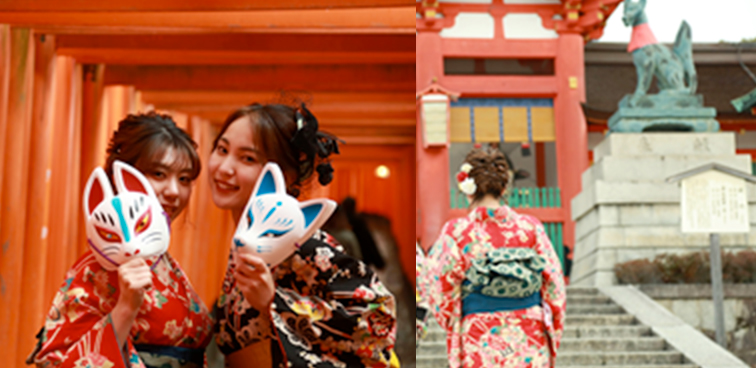
45-1, Fukakusa Inarinakanocho, Kyoto Shi Fushimi Ku, Kyoto Fu, 612-0807, Japan
Tel. +81-75-634-8900 / FAX +81-75-634-8901 / E-mail E-mail fushimiinari@okamoto-kimono.com
Nearest Station: JR Inari Station / Keihan Fushimi Inari Station
Rental Kimono Okamoto Gion Shop
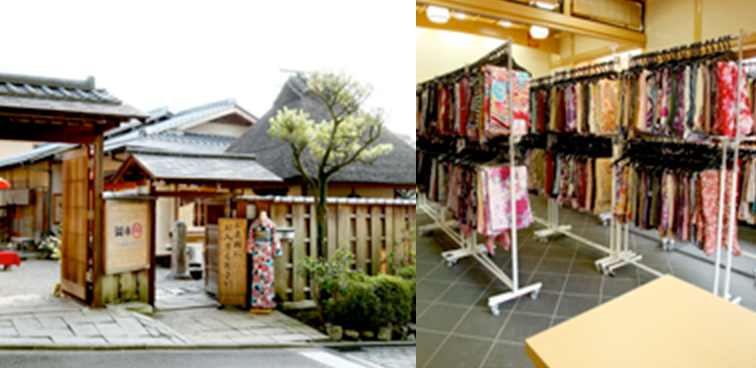
523 Washiocho, Higashiyama-ku, Kyoto 605-0072
Tel. +81-75-531-7890 / FAX +81-75-531-8383 / E-mail gion@okamoto-kimono.com
Nearest stop: City Bus Gion Stop
Rental Kimono Okamoto Kiyomizu Higashiyama Shop
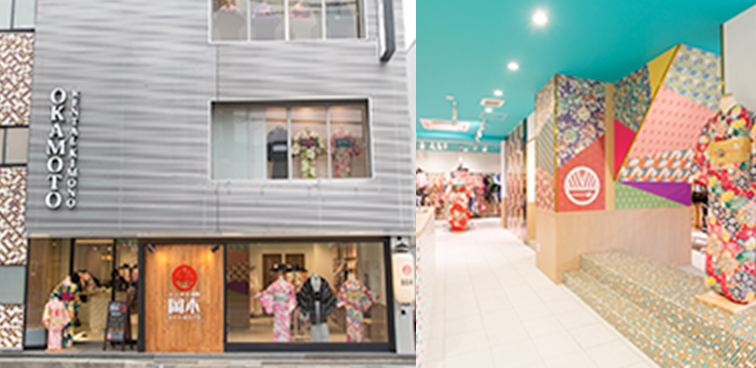
110-9 Tatsumicho, Higashiyama-ku, Kyoto 605-0855
Tel. +81-75-533-8900 / FAX +81-75-533-8910 / E-mail kiyomizuhigasiyama@okamoto-kimono.com
Nearest stop: City Bus Kiyomizumichi stop
Rental Kimono Okamoto Kiyomizu Shop
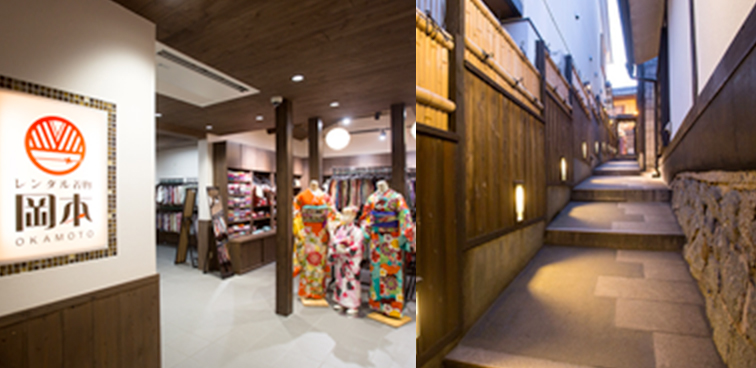
2-237-1-1 Kiyomizu, Higashiyama-ku, Kyoto 605-0862
Tel. +81-75-525-7115 / FAX +81-75-533-8960 / E-mail kiyomizuzaka@okamoto-kimono.com
Nearest stop: City Bus Kiyomizumichi stop
Rental Kimono Okamoto Main Shop
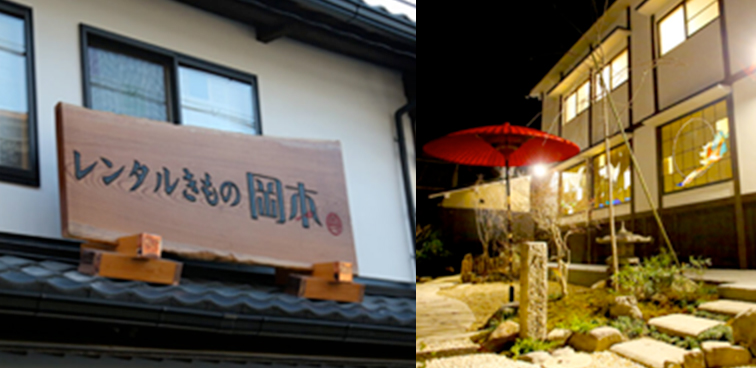
6-546-8 Gojohashihigashi, Kyoto Higashiyama-ku, Kyoto 605-0846
Tel. +81-75-532-1320 /Fax +81-75-532-1480 / E-mail honten@okamoto-kimono.com
Nearest stop: City Bus Gojozaka Stop
Rental Kimono Okamoto Yasaka Jinja Shop
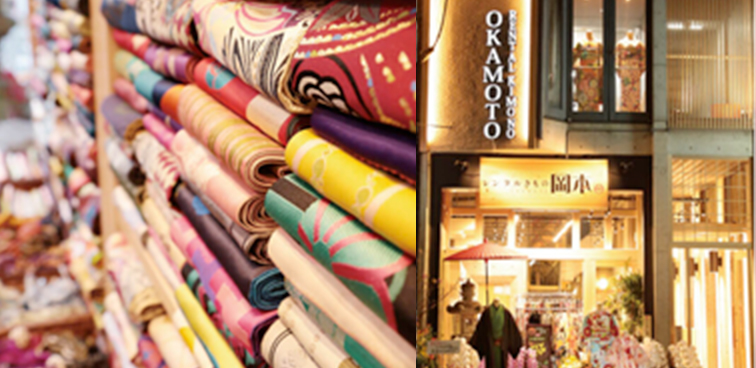
301-1 Gioncho, Higashiyama-ku, Kyoto 605-0073
Tel. +81-75-532-0510 / FAX +81-75-532-0511 / E-mail yasakajinja@okamoto-kimono.com
Nearest stop: City Bus Gion Stop
You can read a feature story about our store, Kyoto and kimono.
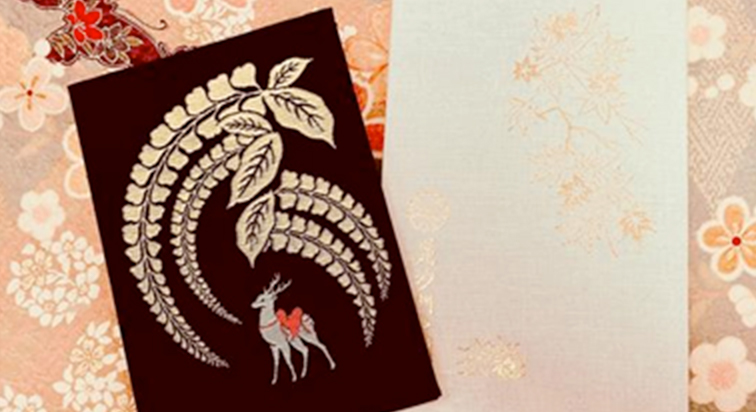
We are introducing various information on proper way of choosing kimono and others to match. Also you can access to our articles about regional, sightseeing information of Kyoto you can refert to before travelling to Kyoto.
You can view articles about kimono all written by us.
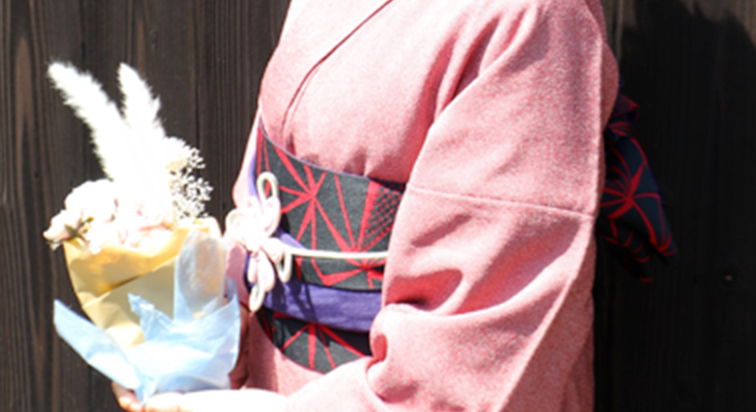
It features various articles about kimono such as history, manner, common sense and a proper way of matching kimono. They will add fun to your going out in kimono.








